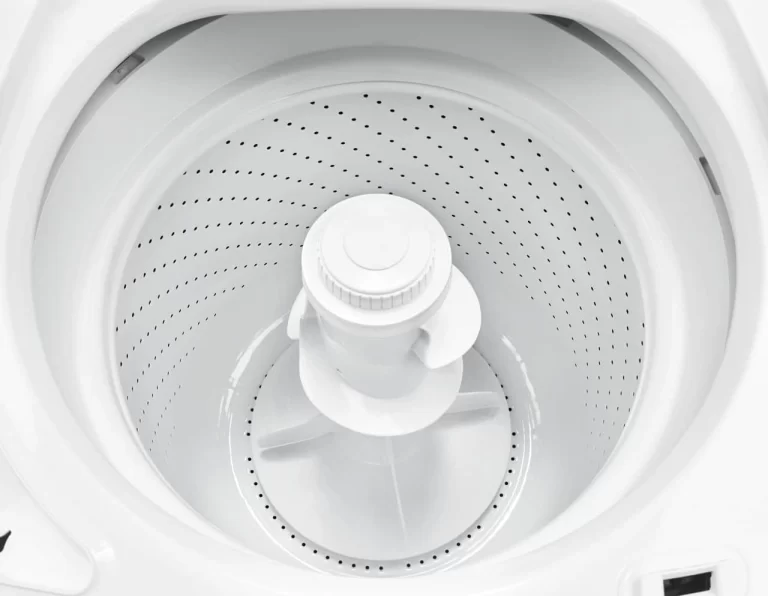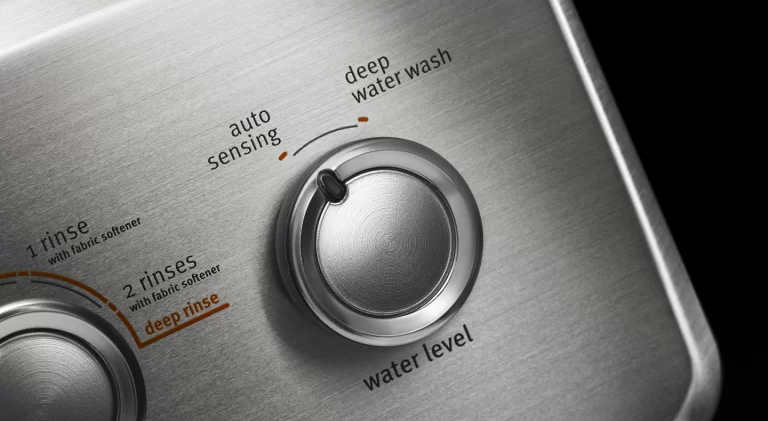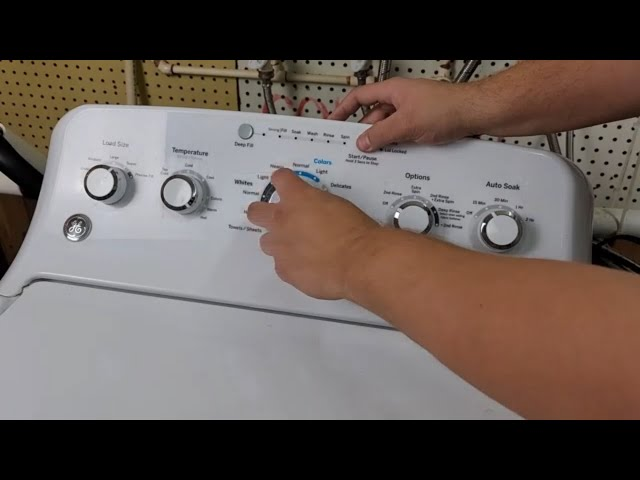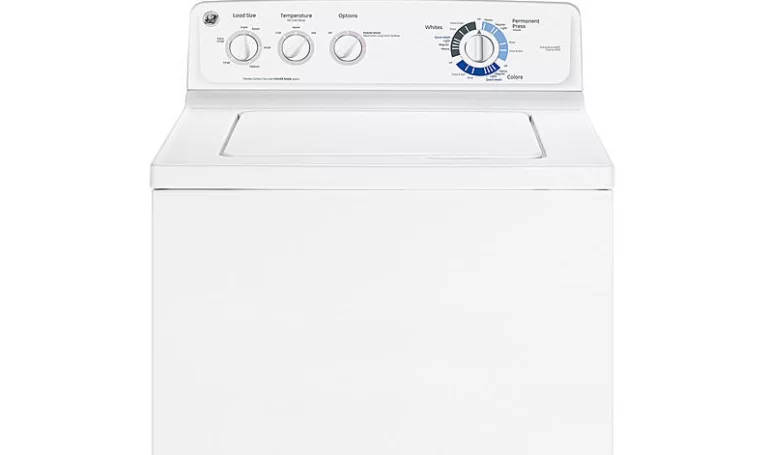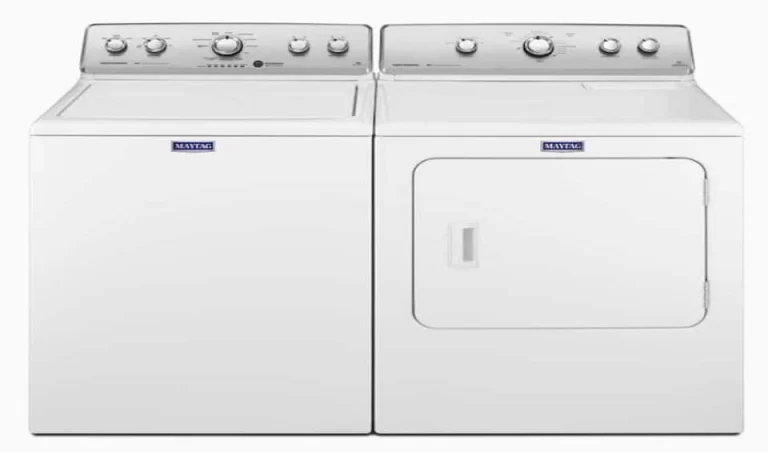Samsung Front Load Washers have revolutionized the laundry experience with their efficiency and innovative features. However, like any household appliance, they come with their set of challenges. Understanding common problems and their solutions can not only save you time and money but also prolong the life of your washer, ensuring smooth laundry days ahead.
Samsung Front Load Washers, while efficient, can face issues like unpleasant odors due to mold, excessive vibration during spin cycles, persistent error codes, water leakage, and detergent residue buildup. Regular maintenance and timely troubleshooting can mitigate most of these problems, ensuring optimal washer performance.
Quick Troubleshooting Guide
| Issue | Symptoms | Fixes |
| Unpleasant Odors | Musty smell, mold on door seal | Run cleaning cycles, leave door open for ventilation |
| Excessive Vibration | Loud noise, washer moving during spin cycle | Ensure washer is level, adjust load balance |
| Persistent Error Codes | Specific error displayed on screen | Refer to user manual, may require technician |
| Water Leakage | Puddles under the washer, wet clothes | Check door seal, ensure door is locked, check hoses |
| Detergent Residue Buildup | White streaks on clothes, slippery drum interior | Use appropriate detergent amount, run cleaning cycles |
| Frozen Evaporator Coils (Example) | AC running but not cooling, ice on unit | Turn off, check airflow, consult technician for refrigerant |
| Drum Problems | Drum doesn’t rotate or makes loud noises | Check for foreign objects, might require technician |
| Inefficient or No Drainage | Water remains in drum post-cycle | Clean drain filter, ensure no blockages, check drain pump |
| Temperature Irregularities | Clothes too hot or cold | Check thermostat and heating element, consult technician |
| Control Panel Malfunctions | Unresponsive buttons, erratic behavior | Reset power, if persists, consult technician |
| Unusual Noises | Grinding, thumping, high-pitched squeals | Check for foreign objects, ensure balance, consult technician |
| Consistent Overheating | Machine or power cord gets excessively hot | Disconnect power, avoid overloading, consult technician |
| Door Lock Issues | Door won’t lock or unlock | Ensure door is aligned, might require lock replacement |
| Dispenser Issues | Detergent or softener isn’t dispensed | Clean dispenser drawer, check for blockages |
| Spin Cycle Issues | Clothes remain soggy, spin cycle doesn’t engage | Ensure washer is level, check load size, consult technician |
15 Common Samsung Front Load Washer Problems and Their Solutions
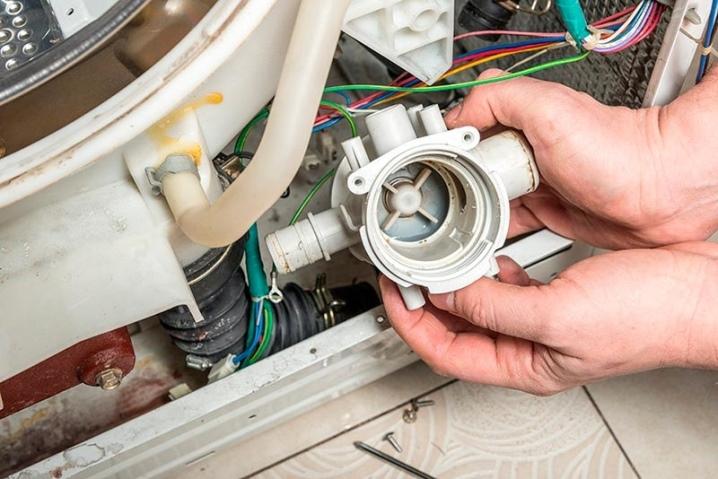
1. Issue: Door Won’t Lock
Over time, the locking mechanism can wear down or encounter electrical hitches.
Symptoms: Unable to start the washing cycle; Door remains loose.
Steps:
- Ensure no debris is caught in the door latch.
- Inspect the door seal for any damages.
- Reset the washing machine by unplugging and replugging after a few minutes.
- If the problem persists, consult a technician to inspect the lock mechanism or control board.
2. Issue: Washer Doesn’t Spin
Sometimes, an imbalanced load or a malfunctioning motor prevents the washer from spinning.
Symptoms: Wet clothes post-cycle; Washer making humming sounds without spinning.
Steps:
- Ensure the washer is on a level surface.
- Distribute clothes evenly in the drum.
- Check for any foreign objects lodged in the drum.
- If the issue continues, seek professional washer repair assistance for potential motor issues.
3. Issue: Drainage Blockages
Foreign objects or build-ups can cause the washer to drain slowly or not at all.
Symptoms: Water remains in the drum after the cycle; Washer displays drainage error codes.
Steps:
- Inspect and clean the filter.
- Ensure the drain hose isn’t kinked or bent.
- Run an empty hot water cycle to clear any blockages.
- Consult a technician if the drainage problem persists.
4. Issue: Mold and Odor in Washer
A damp environment and detergent residues can lead to mold growth.
Symptoms: Unpleasant smells; Black or white spots around the door seal or drum.
Steps:
- Run an empty cycle with hot water and white vinegar.
- Clean the door seal and drum with a mild detergent.
- Leave the washer door open after each use to allow drying.
- Use HE (High Efficiency) detergents and avoid overuse.
5. Issue: Excessive Vibration During Spin Cycle
Imbalanced loads or a non-level surface can cause noisy operations.
Symptoms: Loud thumping sounds; Washer moving from its position.
Steps:
- Redistribute the laundry load.
- Adjust the washer legs to ensure a level position.
- Place anti-vibration pads under the washer.
- If the vibrations continue, inspect the shock absorbers or consult a technician.
6. Issue: Water Inlet Valve Malfunction
This issue can affect the temperature and amount of water entering the washer.
Symptoms: Water too hot or cold; Insufficient water in the drum.
Steps:
- Ensure hoses are connected to the correct taps.
- Check for any blockages in the inlet filters.
- Test the water inlet valve for continuity.
- Replace the water inlet valve if faulty.
7. Issue: Washer Displaying Error Codes
Samsung washers have a system of error codes to indicate specific problems.
Symptoms: Washer displays error codes such as “1E”, “SE”, etc.
Steps:
- Refer to the Samsung washer manual to decipher the error code.
- Follow the recommended troubleshooting steps.
- Reset the washer by unplugging it for a few minutes.
- If the error code returns, contact Samsung support or a professional technician.
8. Issue: Overloading the Machine
Adding too many clothes strains the motor and affects washing efficiency.
Symptoms: Inadequately cleaned clothes; Washer making straining noises.
Steps:
- Avoid filling the washer to its maximum capacity.
- Distribute clothes evenly to ensure balanced loads.
- Consult the user manual for recommended load sizes.
- Check the motor for any signs of wear or damage.
9. Issue: Detergent Dispenser Issues
Clogs and blockages can affect the detergent flow.
Symptoms: Detergent remains in the dispenser post-cycle; Clothes not cleaned properly.
Steps:
- Clean the detergent dispenser regularly.
- Use the correct type and amount of detergent.
- Ensure the siphon cap is properly placed.
- Replace the dispenser if visibly damaged or consult a technician.
10. Issue: Control Board Failures
The washer’s “brain” may occasionally glitch or malfunction.
Symptoms: Washer behaves erratically; Certain functions don’t activate.
Steps:
- Reset the washer by unplugging it for several minutes.
- Check for any visible damages or burnt areas on the control board.
- If the washer remains unresponsive, consider replacing the control board or seeking professional assistance.
11. Issue: Drum Not Turning
Faulty belts or issues with the motor can prevent the drum from moving.
Symptoms: Motor running but drum remains still; Burnt rubber smell.
Steps:
- Inspect the belt for any signs of wear or breakage.
- Ensure the motor is functional and turning as required.
- Replace the drive belt if damaged.
- If the drum still doesn’t turn, consult a technician.
12. Issue: Leaks Around the Door
A damaged door seal or improper closing can result in water leaks.
Symptoms: Puddles of water around the washer; Wet spots on the laundry room floor.
Steps:
- Check the door seal (gasket) for any tears or foreign objects.
- Clean the door seal regularly to prevent debris build-up.
- Ensure the door is closed properly before starting a cycle.
- Consider replacing the door seal if visibly damaged.
13. Issue: Washer Overheats
Overloading or motor issues can lead to overheating.
Symptoms: Unusual hot surface of the washer; Burning smell.
Steps:
- Stop the washer immediately.
- Reduce the load and ensure it’s evenly distributed.
- Allow the washer to cool down before using again.
- If overheating persists, inspect the motor or consult a technician.
14. Issue: Unresponsive Touchpad
Sometimes, the touchpad can become unresponsive due to electrical issues.
Symptoms: Buttons not working; Difficulty in setting up the washing cycle.
Steps:
- Reset the washer by unplugging it for a few minutes.
- Clean the touchpad surface to ensure there’s no residue or moisture.
- Check for any visible damages.
- If it remains unresponsive, consider replacing the touchpad or seeking professional help.
15. Issue: Unfinished Cycles
The washer might sometimes stop mid-cycle due to various issues.
Symptoms: Washer stops suddenly; Clothes remain soaked.
Steps:
- Check for any error codes displayed.
- Ensure the door is locked properly.
- Inspect for any blockages or imbalances.
- If the washer consistently stops mid-cycle, consult the user manual or seek professional assistance.
When to Seek Professional Help
Your Samsung Front Load Washer, like any sophisticated appliance, has been designed to operate efficiently for years. However, despite regular maintenance and care, there will be times when professional expertise is required.
Knowing when to seek professional assistance can save you from further damaging the machine, incurring additional expenses, and prolonging the life of your washer. Here’s a guide on when it’s best to consult the experts:
1. Persistent Error Codes
While your washer’s manual provides a breakdown of error codes and their general solutions, some error codes might persist even after you’ve followed the recommended troubleshooting steps. If an error code remains after multiple attempts to resolve it, it’s a clear sign that a technician should assess the problem.
2. Electrical Issues
If you notice sparking, unusual noises from the motor, the smell of burning wires, or if your machine repeatedly trips the circuit breaker, it’s crucial to unplug your washer and call a professional immediately. Such issues can pose a fire risk and require an expert’s attention.
3. Water Leakage
Occasional minor leaks might be fixed by replacing the door seal or ensuring the door is locked properly. However, if your machine constantly leaks or if there’s significant flooding, it could be indicative of a more severe internal issue that needs a professional’s inspection.
4. Drum Problems
If the drum doesn’t rotate at all or makes excessive noises during its operation, this could be due to motor issues or problems with the drive belt. While some enthusiastic DIYers might attempt belt replacements, it’s generally advised to consult a professional to ensure the job is done correctly and safely.
5. Inefficient or No Drainage
If your washer consistently fails to drain even after you’ve cleaned the drain filter and ensured no blockages, the problem could lie deeper within the machine – possibly with the drain pump or other related components. A technician can identify and rectify such issues.
6. Temperature Irregularities
If your clothes come out scalding hot or the washer isn’t using hot water when it should, there could be a problem with the heating element or the thermostat. Such components should be inspected and replaced by professionals.
7. Control Panel and Touchpad Malfunctions
The control panel is the brain of your washer. If buttons are unresponsive, settings can’t be changed, or the machine behaves erratically, the motherboard or control panel may be at fault. Such components are intricate and expensive, and a professional can provide a proper diagnosis and solution.
8. Unusual Noises
While all washing machines make some level of noise, if you start hearing unusual sounds like grinding, thumping, or high-pitched squeals that you can’t identify and resolve through basic troubleshooting, it’s time to consult a technician.
9. Consistent Overheating
Washers may feel warm to the touch, but they should never become excessively hot. If the machine or its power cord becomes too hot, there might be an underlying issue that needs to be inspected by an expert.
10. Warranty Considerations
If your Samsung Front Load Washer is still under warranty, always consult a professional before attempting any significant repairs yourself. DIY repairs might void the warranty, whereas a certified technician can ensure your machine remains covered.
Maintenance Tips for Long-lasting Operation
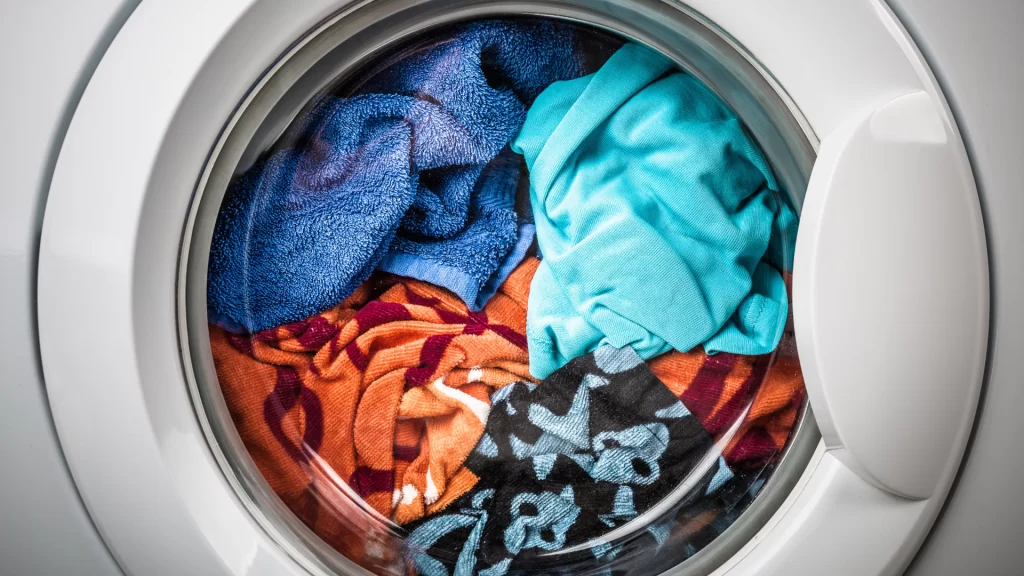
To ensure that your Samsung Front Load Washer operates efficiently and lasts for years, regular maintenance is crucial. Just like a car or any other machine, your washer requires routine care to maintain its performance and extend its lifespan. Here’s a comprehensive guide to help you keep your washer in top condition:
1. Monthly Drum Cleaning
Over time, detergent residue, dirt, and water minerals can accumulate in the drum, potentially leading to unpleasant odors or less efficient washing.
Steps:
- Run an empty cycle on the hottest water setting.
- Add a cup of white vinegar or a specialized washing machine cleaner to help break down residue.
- Allow the cycle to complete fully.
2. Regularly Inspect the Door Seal (Gasket)
The door seal is crucial for preventing leaks.
Steps:
- Wipe down the gasket with a damp cloth every week.
- Inspect for any signs of wear, tear, or foreign objects.
- Ensure that there’s no water pooling at the bottom of the seal, as this can lead to mold growth.
3. Clean the Detergent Drawer
Detergent and fabric softener can leave residue, which might result in blockages or mold.
Steps:
- Remove the drawer (refer to the user manual for guidance).
- Soak it in warm water and gently scrub it using a soft brush.
- Rinse thoroughly and let it air dry before reinserting.
4. Check the Water Inlet Filters
These filters can become clogged with sediment over time, affecting water flow.
Steps:
- Turn off the water supply.
- Unscrew the hoses from the back of the washer.
- Check the filters for debris and clean them as needed.
- Reattach the hoses and turn the water back on.
5. Ensure Proper Leveling
A washer that isn’t level can become noisy and even move around during the spin cycle.
Steps:
- Place a level on top of the washer.
- Adjust the washer’s feet until it’s both horizontally and vertically level.
- Tighten the lock nuts to secure the feet in place.
6. Avoid Overloading
Overloading the machine not only affects washing efficiency but also puts excessive strain on the motor and drum.
Steps:
- Refer to the user manual for recommended load sizes.
- Distribute clothes evenly in the drum.
- Ensure there’s enough space for clothes to move freely.
7. Use the Right Amount of Detergent
Too much detergent can leave residue in your machine and on your clothes.
Steps:
- Measure detergent according to the manufacturer’s recommendations.
- Opt for High-Efficiency (HE) detergents designed for front load washers.
8. Keep the Machine Dry
Leaving the door and detergent drawer open between cycles can prevent mold and mildew growth.
Steps:
- After each cycle, wipe down the interior of the drum, door, and gasket.
- Keep the door and detergent drawer slightly open when not in use.
9. Inspect External Hoses
Hoses can develop leaks or become weakened over time.
Steps:
- Regularly check the hoses for signs of wear, bulging, or cracking.
- Replace hoses every 3-5 years or sooner if you spot any signs of damage.
10. Regularly Check for Foreign Objects
Coins, buttons, or other small items can get trapped in the drum or drain pump filter, causing noise and potential damage.
Steps:
- Check pockets before loading the washer.
- Regularly inspect the drum and gasket for any foreign objects.
FAQs
1. Why does my Samsung Front Load Washer have a bad odor?
Bad odors in front load washers often result from mold and mildew buildup due to residual water and detergent. To prevent this, ensure the washer door and detergent drawer are left open between cycles to allow proper ventilation. Running monthly cleaning cycles using white vinegar or a washer cleaner can also help combat odors.
2. Is it normal for the washer to vibrate loudly during the spin cycle?
While some vibration is normal during the spin cycle, excessive vibration can be due to an unbalanced load or an unevenly positioned washer. Ensure the washer is level and avoid overloading the machine. If the problem persists, it may be indicative of a more significant internal issue, such as a damaged drum or motor.
3. How often should I clean the drain filter in my Samsung Front Load Washer?
The drain filter should be checked and cleaned every month, especially if the washer is frequently used. A clogged filter can affect the drainage system and may lead to water not being drained efficiently from the machine.
4. Why is my washer displaying an error code, and how do I resolve it?
Samsung Front Load Washers display error codes to indicate specific issues, ranging from door problems to water supply issues. Refer to your user manual for a breakdown of error codes and their solutions. If an error code persists after troubleshooting, it’s advisable to consult with a professional.
5. Can I use regular detergent in my Samsung Front Load Washer?
No, it’s recommended to use High-Efficiency (HE) detergents in front load washers. These detergents are specially formulated to produce fewer suds and work effectively in lower water levels, which is common in front-loading machines. Using regular detergent can result in excess suds, which might lead to residue buildup and poor washing performance.
Conclusion
In the world of home appliances, being informed is the key to longevity and efficient performance. By familiarizing oneself with common issues and their resolutions, owners of Samsung Front Load Washers can ensure they get the most out of their investment, maintaining a reliable laundry companion for years to come.

